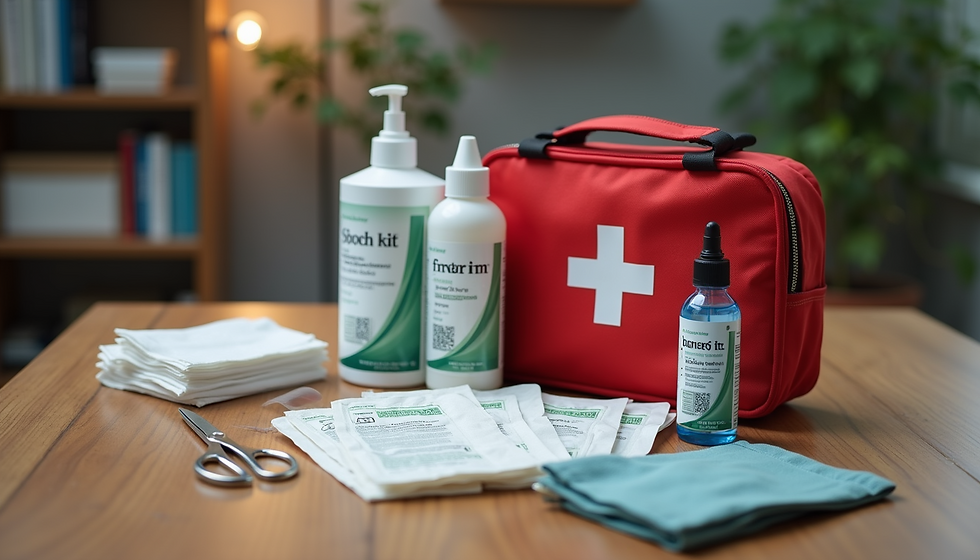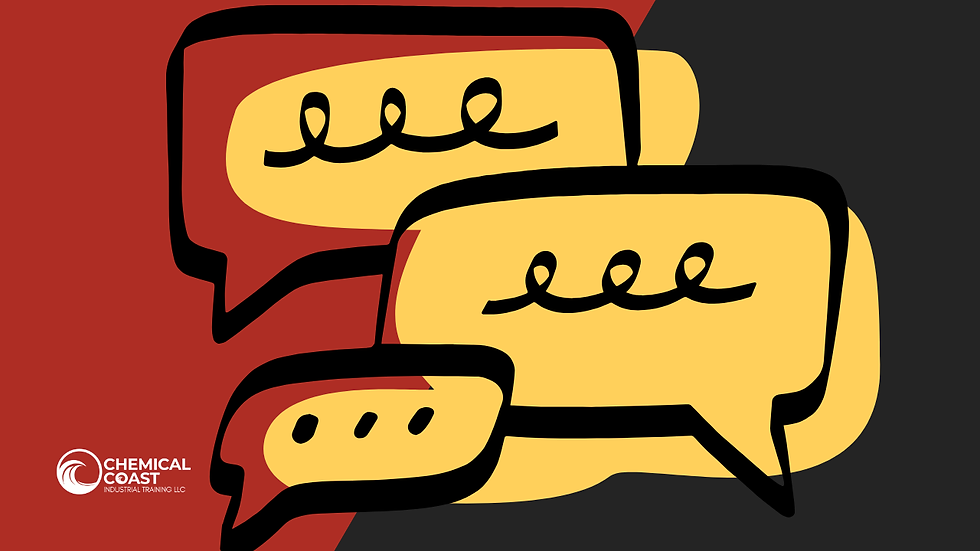The Importance of Proper PPE Gloves When Administering First Aid
- Cully Mulryan

- Sep 25
- 3 min read
In emergency situations, knowing how to provide first aid can be the difference between life and death. However, giving first aid comes with significant responsibilities, especially regarding personal safety. One crucial element in ensuring safety is the use of proper personal protective equipment (PPE), particularly gloves. In this post, we will discuss the importance of wearing the right PPE gloves when giving first aid, the types of gloves available, and best practices for their use.
Understanding the Role of PPE Gloves
PPE gloves are essential barriers between the first aider and possible contaminants. During first aid, the risk of exposure to bodily fluids is high, which can transmit infectious diseases. For example, the Centers for Disease Control and Prevention (CDC) estimates that 1 in 10 people in the U.S. is infected with a bloodborne virus, such as Hepatitis B or C, or HIV. Wearing gloves protects the first aider and prevents the spread of infections to others.
Using gloves is critical in maintaining hygiene, ensuring the first aid process is as safe as possible for everyone involved.

Types of PPE Gloves
Different types of gloves are available for first aid, each offering unique benefits. Understanding these options helps first aiders select the right gloves for their situations.
1. Latex Gloves
Latex gloves are a common choice due to their comfort and elasticity. They provide a strong barrier against many pathogens and are suitable for most first aid scenarios. However, it's crucial to note that about 5% of the population has latex allergies, which can limit their use in some cases.
2. Nitrile Gloves
Nitrile gloves are an excellent choice for those allergic to latex. They are puncture-resistant and offer a high level of protection against chemicals and infectious agents. Nitrile gloves are often preferred in medical settings for their durability, with studies showing they outperform latex gloves in preventing punctures by approximately 50%.
3. Vinyl Gloves
Vinyl gloves provide a cost-effective option where high levels of protection are not necessary. Although they are less durable than latex or nitrile gloves, they work well for low-risk tasks or when treating minor wounds.
Selecting the right type of glove is essential for ensuring safety and effectiveness during first aid.

Best Practices for Using PPE Gloves
To make the most of PPE gloves during first aid, first aiders should follow key guidelines:
1. Inspect Gloves Before Use
Always check gloves for signs of damage, such as tears or punctures, before wearing them. Studies suggest that about 15% of gloves are defective, which can compromise safety.
2. Properly Don and Doff Gloves
Before putting on gloves, ensure your hands are clean and dry. Avoid touching the outside of the gloves with your bare hands. When removing gloves, do so carefully to prevent contact with any contaminants on the surface.

3. Dispose of Gloves Properly
After providing first aid, dispose of gloves in a designated biohazard waste container if they are contaminated. If not contaminated, they can be tossed in regular waste. Always wash your hands thoroughly after removing gloves.
By following these best practices, first aiders can significantly reduce infection risk and create a safer environment for everyone involved.
The Legal and Ethical Implications
Using proper PPE gloves extends beyond personal safety; it also includes legal and ethical considerations. In many regions, first aiders are legally required to use PPE while providing care. For instance, failing to don gloves can lead to legal consequences if a patient contracts an infection due to negligence.
Ethically, first aiders must protect both themselves and their patients. By wearing gloves, they express a commitment to safety and care, which is critical in any first aid scenario.
Final Thoughts on PPE Gloves in First Aid
The significance of proper PPE gloves in first aid cannot be overstated. They act as a vital shield against possible contaminants, safeguarding both the first aider and the patient. By understanding the various types of gloves available, adhering to best practices, and recognizing the legal and ethical implications, first aiders can ensure a safer and more effective response in emergencies.
In a world where health and safety are crucial, simply wearing gloves can make a significant impact. Whether you are a trained first aider or a bystander stepping in to help, always prioritize safety by using proper PPE gloves.


_edited.png)



Comments